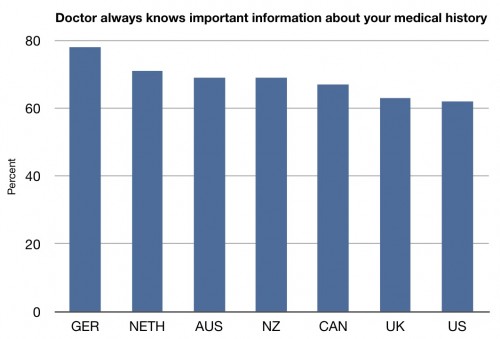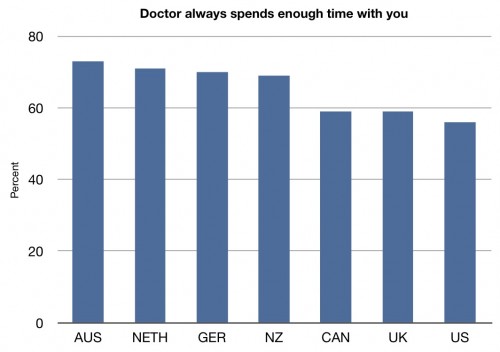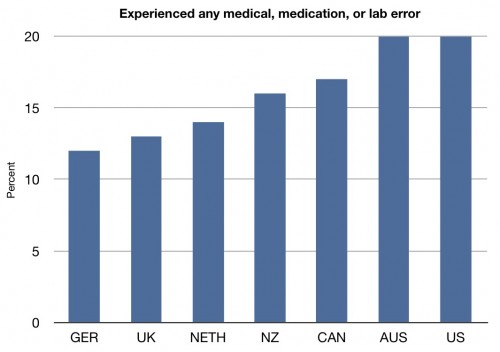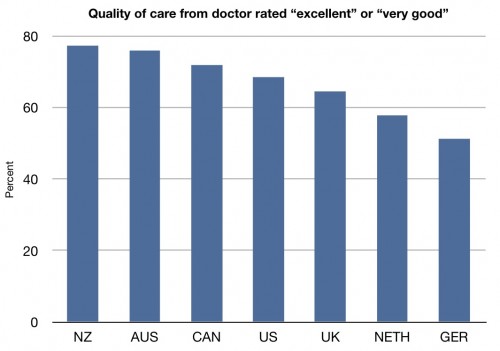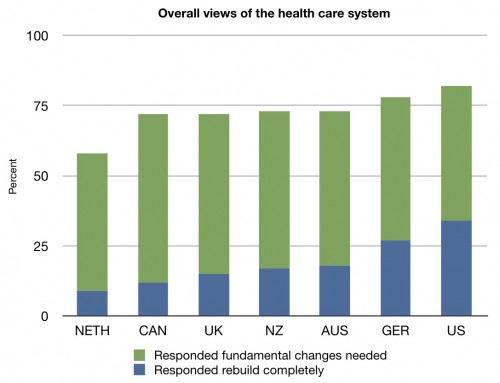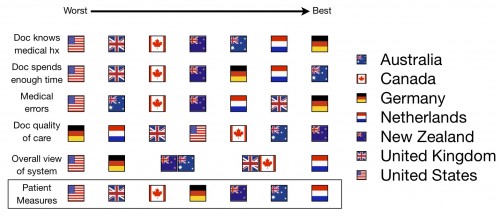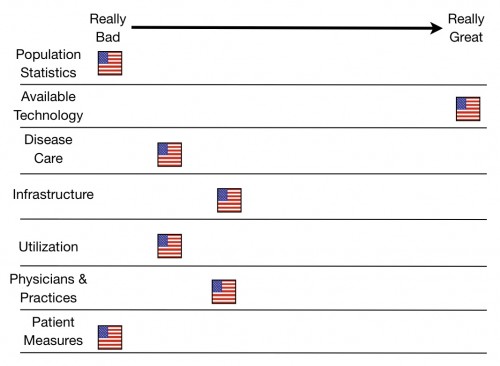If you haven’t read the introduction, go back and read it now. That introductory post also includes links to all the posts in this series on how we can rate the quality of the US health care system. Each of these pieces will discuss another way to look at quality, and how the US compares to comparable countries in that domain.
If we are going to look at physicians and practices, we also need to look at patients. As the consumers of the health care system (and ultimately the funders) they should have some say in the matter.
For this series, I will be drawing data from The Commonwealth Fund. Specifically, I will be referencing their 2007 International Health Policy Survey in Seven Countries:
Telephone survey: representative samples of adults ages 18 and older in Australia, Canada, Germany, the Netherlands, New Zealand, the United Kingdom, and the United States.
Final samples: 1,009 Australia, 3,003 Canada, 1,407 Germany, 1,557 the Netherlands, 1,000 New Zealand, 1,434 United Kingdom, and 2,500 United States.
Core topics: Access, Coordination, Patient-Centered Care, Chronic Care, and Safety.
Basically, this is similar to their survey of physicians and practices that I discussed yesterday, but this time they surveyed random people, who could represent patients in the health care systems.
Let’s begin with some measures of patient satisfaction with their physicians’ practices. The first involves whether patients feel like their physicians know their medical histories:
This may seem like a small thing, but as anyone who has ever been to the doctor knows, it’s frustrating when they don’t know who you are and what your needs might be. And fewer people report having that kind of relationship with their doctor in the US than any of the other measured countries.
Another measure is whether the doctor spends enough time with you:
Again, this is subjective, but meaningful. People definitely see this as a measure of quality. We’re paying enough, and we get to see the doctor less than in other countries. You would hope that we get to spend enough time per visit, but that’s just not the case.
Another measure of system quality that patients report is how often errors occur. Let’s look at what percentage of patients in each of these countries report a medical, medication, or laboratory error:
Tied for last. Remember, these are individual patients reports, so it’s hard to spin these away as biased or unfair in some way.
Let’s move onto more direct measures of quality. How do patients in each country rate the quality of care they receive from their doctors?
I suppose middle of the road is an improvement over what we have seen so far. Again, though, this is consistent with other things we’ve seen. The problem isn’t necessarily that our physicians are of lesser quality. It’s that the system might be. Good thing they asked the same patients about what kind of changes they thought the system might need:
Dead last. More patients in the United States felt like the health care system needed fundamental changes or to be completely rebuilt in the United States than in any of these other countries.
You will hear some say that people in the United States feel that they have the best health care system in the world. They may think that. But people in the United States don’t seem to understand how much better people in other countries feel about their systems.
Here’s your seventh scorecard:
And here’s the running total for the series:
A further explanation of these charts can be found here.

